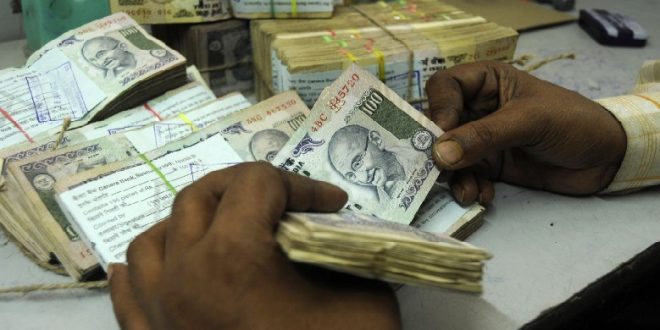21-12-2023
Bureau Report + Agencies
NEW DELHI: In November 2016 India abruptly scrapped two banknotes constituting 86% of all currency in circulation, in a move aimed at combating corruption and curbing undeclared wealth.
 Demonetization as the currency ban was popularly called – sparked scenes of chaos outside banks and cash machines. Critics said the move hurt low-income Indians and hobbled India’s sprawling informal economy where people mainly dealt in cash. Prime Minister Narendra Modi has consistently defended the move, saying that the currency ban had “helped reduce black money (undeclared wealth), increase tax compliance and formalisation and given a boost to transparency” but seven years later, cash continues to hold ground, casting renewed doubt on the necessity of the controversial currency ban. According to the Reserve Bank of India (RBI), cash in circulation in the economy grew by over 16.6% in 2020-21 compared with average annual growth rate of 12.7% over the previous decade. The currency in circulation as a share of GDP, a common way to explain cash use in a country peaked at over 14% in 2020-21, and moderated to 13% in 2021-22.
Demonetization as the currency ban was popularly called – sparked scenes of chaos outside banks and cash machines. Critics said the move hurt low-income Indians and hobbled India’s sprawling informal economy where people mainly dealt in cash. Prime Minister Narendra Modi has consistently defended the move, saying that the currency ban had “helped reduce black money (undeclared wealth), increase tax compliance and formalisation and given a boost to transparency” but seven years later, cash continues to hold ground, casting renewed doubt on the necessity of the controversial currency ban. According to the Reserve Bank of India (RBI), cash in circulation in the economy grew by over 16.6% in 2020-21 compared with average annual growth rate of 12.7% over the previous decade. The currency in circulation as a share of GDP, a common way to explain cash use in a country peaked at over 14% in 2020-21, and moderated to 13% in 2021-22.
At the same time, digital transactions are also soaring, driven by expanding smartphone and debit card usage, and widespread delivery of welfare benefits.
This surge is led by the Unified Payments Interface (UPI), a platform facilitating seamless and near-instant account-to-account transfers through fintech apps. Last year, UPI transactions surpassed a trillion dollars, equivalent to a  third of India’s GDP. Powered by a remarkable 89 million transactions, India accounted for 46% of all global digital payments, according to ACI Worldwide and Global Data 2023.
third of India’s GDP. Powered by a remarkable 89 million transactions, India accounted for 46% of all global digital payments, according to ACI Worldwide and Global Data 2023.
The simultaneous growth of both cash and digital payments is widely referred to as a “currency demand” paradox. “Since cash and digital modes are generally expected to substitute each other, the simultaneous rise in both seems counterintuitive,” according to the RBI’s latest annual report.
Withdrawals from cash machines have diminished and cash velocity, the rate at which consumers and businesses exchange money in an economy has slowed but for most Indians, cash continues to be a valuable “precautionary” financial saving household’s stock cash for emergency purposes and a store of value. The share of big denomination currency 500 and 2,000-rupee notes together accounted for more than 87% of the total value of banknotes in circulation as of 31 March, according to RBI. (In May, the highest denomination 2,000-rupee banknote, curiously introduced after the 2016 currency ban, was withdrawn by the central bank.)
 Pressmediaofindia
Pressmediaofindia




